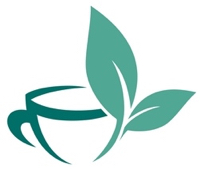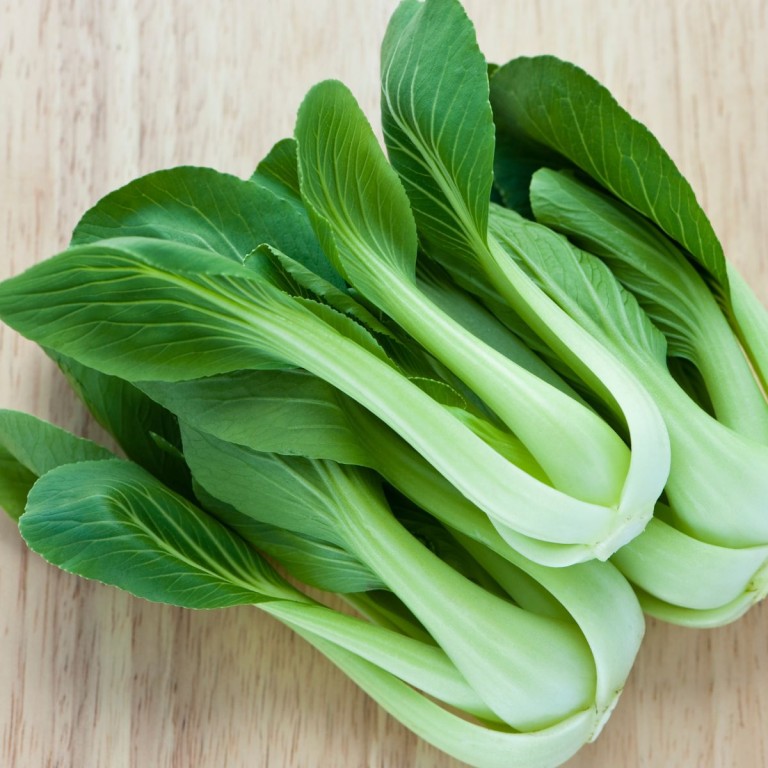Seasonal Produce Spotlight: Health Benefits of Swiss Chard
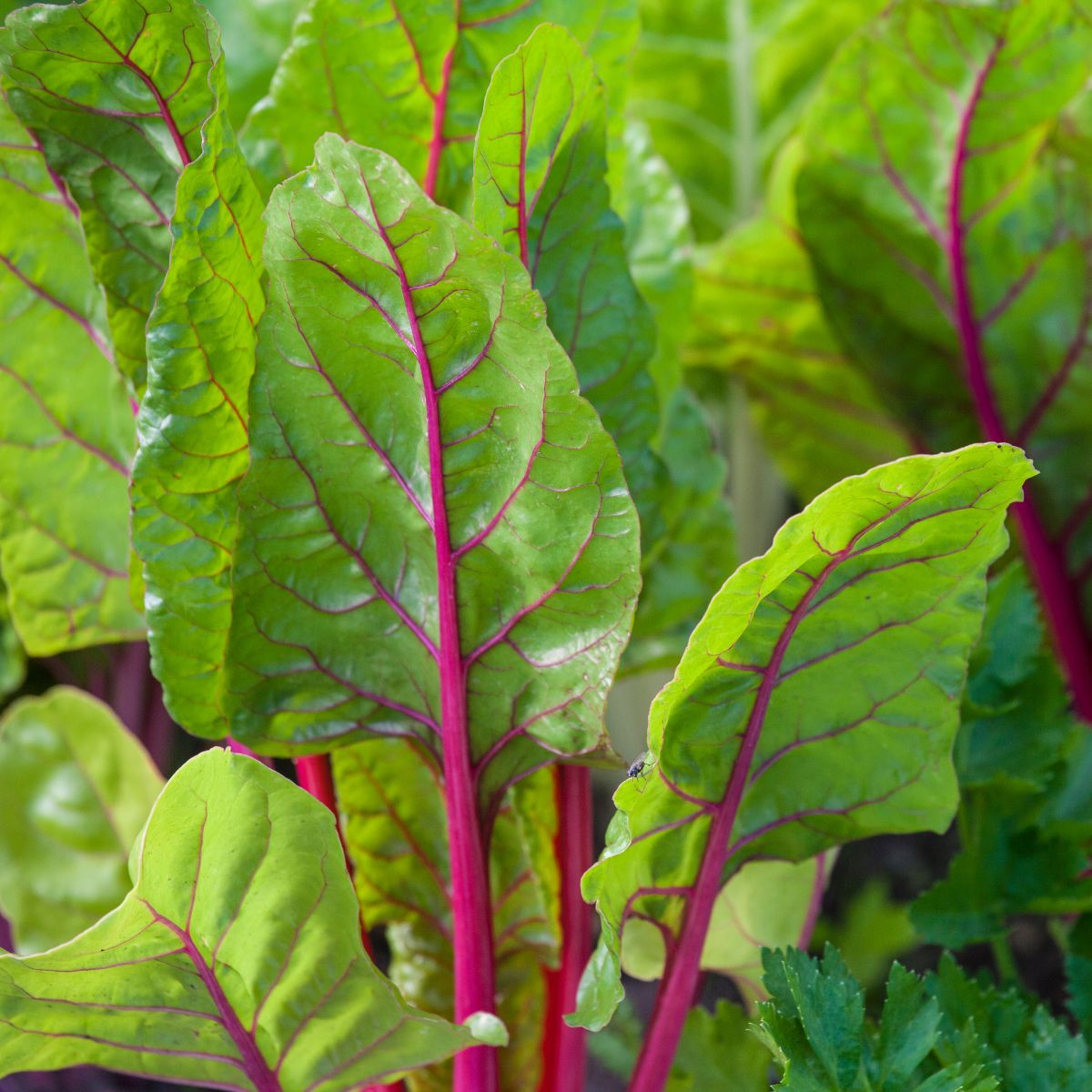
Nutrition Information and How to Eat It.
For anyone trying to eat a lot of leafy greens, Swiss chard is a must. It can be eaten raw or cooked and is so packed with nutrients that it’s not only ranked as one of the healthiest greens, it’s considered to be one of the healthiest foods overall1. Here’s a look at the health benefits of Swiss chard, its nutrition information and some tips on how to eat it.
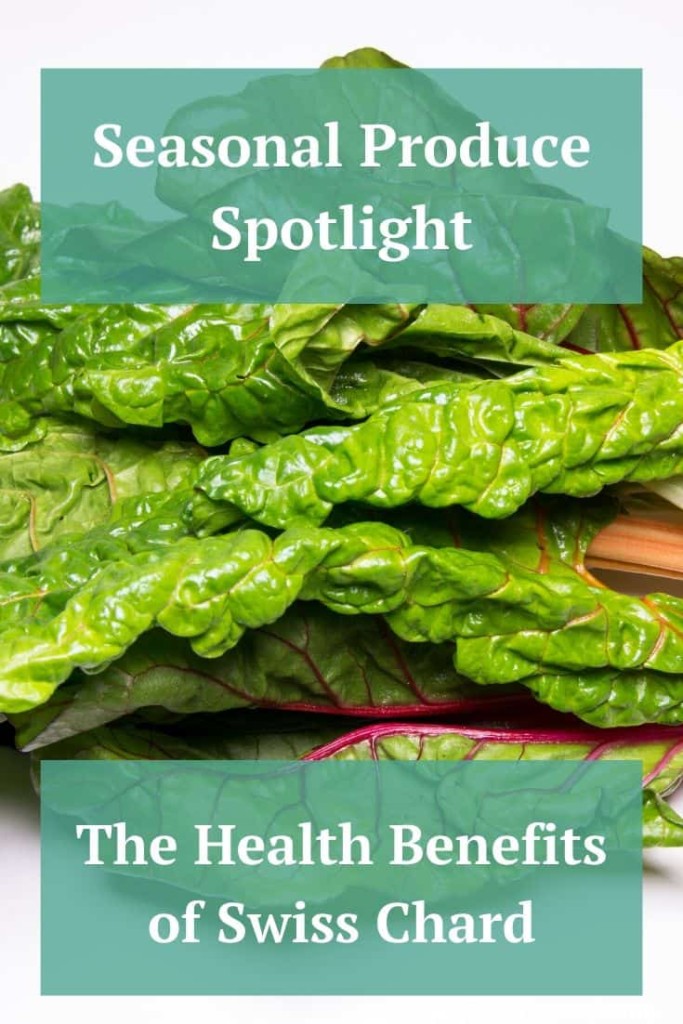
What is Swiss chard?
Swiss chard is a member of the Amaranthaceae plant family2, which also includes beets and spinach. It has beautiful colored stems that can be white, yellow, orange or various shades of red. Rainbow chard is simply different kinds bunched together.
Swiss chard was first traced to Sicily and is very popular with Mediterranean cooks3. According to the University of Illinois Extension’s Watch Your Garden Grow series, the word “Swiss” was “used to distinguish it from French charde by nineteenth century seed catalogues publishers and the name stuck3.”
Swiss chard generally grows when temperatures are a little cooler in the spring or fall, but The Old Farmer’s Almanac says that it’s very tolerant of hotter temperatures too4. That’s why you can find it at local farmers’ markets in the summer, even when it’s too hot for other greens. You can usually find it year-round in the refrigerated produce section at your grocery store.
Nutrients in Swiss chard
The many health benefits of Swiss chard come from the fact that it’s packed with nutrients. Consequently, it ranks among the top five nutrient dense foods on Dr. Joel Fuhrman’s Aggregate Nutrient Density Index (ANDI)1.
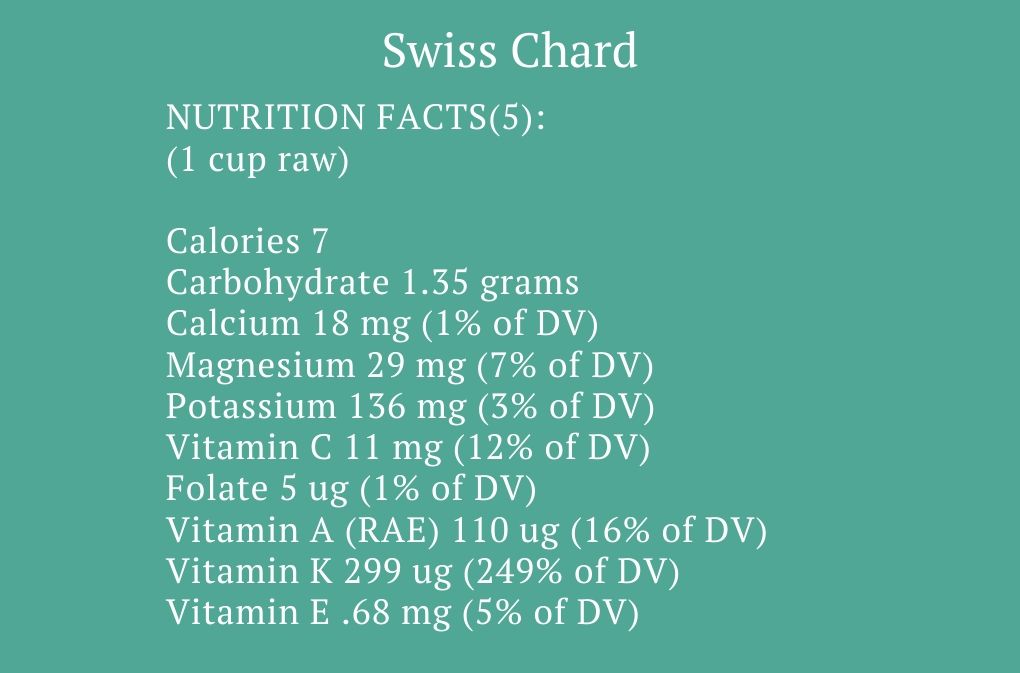
Health benefits of Swiss chard
Swiss chard is high in antioxidants and is widely used as an antidiabetic in traditional medicine in many cultures around the world6,7,8,9. One of the studies that looked at the antidiabetic properties also looked at the possible antibacterial activities of different extracts and isolated flavone C-glycoside compounds from Swiss chard leaves. Researchers found that the leaves can be used as “a natural source of antibiotic and hypoglycemic drugs8.” Still another study found that some of the phytochemicals in chard help to inhibit cancer cell growth and that extracts help treat high blood pressure9. All traits that make Swiss chard a truly functional food9.
How to store and eat Swiss chard
Swiss chard should be eaten fairly soon after it’s bought. Because it’s highly perishable, storing it in the refrigerator is best. You’ll also want to wait to wash the leaves until you’re ready to use them.
You can store Swiss chard in a sealed refrigerator-safe bag for 2-3 days (although I’ve had it keep for as long as 7 days before and it still tasted perfectly fine.) You can also eat the stems. If they’re stored separately from the leaves, they’ll last longer.
Swiss chard leaves taste a little earthy and are a great substitute for spinach. You can eat them either raw or cooked. I often include them with the kale in my smoothie just to add additional nutrients. The stems taste wonderful roasted with just olive oil, salt and pepper.
Here are some of my favorite recipes that use Swiss chard:
Cost of Swiss chard
Swiss chard, like other leafy greens, is usually sprayed heavily with pesticides and fungicides. As a result, it’s best to buy organic if at all possible. The price I pay at the farmers’ market for organic is $3/bunch. That is cheaper than the $3.50-$3.75 that I would pay for conventional that the mainstream grocery store charges. Somewhat surprisingly, I can buy organic at Whole Foods for as little as $2.49. That’s cheaper than both the farmers’ market and the regular grocery store. No matter where you buy it, Swiss chard is an inexpensive way to add plenty of nutrients to any meal.
Lean on your community
What is your favorite way to use Swiss chard? Be sure and let us know in the comments below.
Sources
- Joel Fuhrman, MD. ANDI Food Scores: Rating the Nutrient Density of Foods. https://www.drfuhrman.com/elearning/eat-to-live-blog/128/andi-food-scores-rating-the-nutrient-density-of-foods
- Food Source Information. Colorado Integrated Food Safety Center of Excellence. Swiss Chard. https://fsi.colostate.edu/swiss-chard/#zp-ID-4095-176389-KAQM9ISV
- University of Illinois Extension. Watch Your Garden Grow series. Chard. https://web.extension.illinois.edu/veggies/chard.cfm
- The Old Farmer’s Alamanac. https://www.almanac.com/plant/swiss-chard
- U.S. Department of Agriculture. FoodData Central. https://fdc.nal.usda.gov/fdc-app.html#/food-details/169991/nutrients
- Mzoughi Z, Chahdoura H, Chakroun Y, et al. Wild edible Swiss chard leaves (Beta vulgaris L. var. cicla): Nutritional, phytochemical composition and biological activities. Food Res Int. 2019;119:612-621. doi:10.1016/j.foodres.2018.10.039 https://pubmed.ncbi.nlm.nih.gov/30884696/
- Sacan O, Yanardag R. Antioxidant and antiacetylcholinesterase activities of chard (Beta vulgaris L. var. cicla). Food Chem Toxicol. 2010;48(5):1275-1280. doi:10.1016/j.fct.2010.02.022 https://pubmed.ncbi.nlm.nih.gov/20184938/
- Mohammed HS, Abdel-Aziz MM, Abu-Baker MS, Saad AM, Mohamed MA, Ghareeb MA. Antibacterial and Potential Antidiabetic Activities of Flavone C-glycosides Isolated from Beta vulgaris Subspecies cicla L. var. Flavescens (Amaranthaceae) Cultivated in Egypt. Curr Pharm Biotechnol. 2019;20(7):595-604. doi:10.2174/1389201020666190613161212 https://pubmed.ncbi.nlm.nih.gov/31203800/
- Ninfali P, Angelino D. Nutritional and functional potential of Beta vulgaris cicla and rubra. Fitoterapia. 2013;89:188-199. doi:10.1016/j.fitote.2013.06.004 https://pubmed.ncbi.nlm.nih.gov/23751216/
